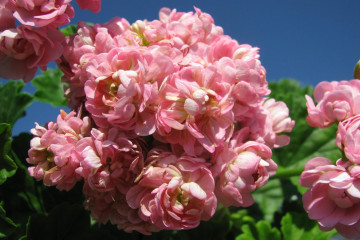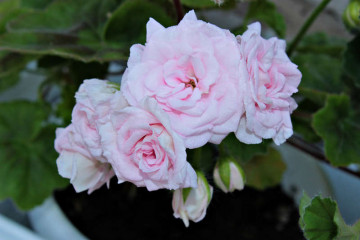Callistemon lemon: features of home care
Content:
Callistemon lemon is an unusual plant that belongs to the Myrtle family. It has amazing inflorescences, which include a large number of long stamens and form original brushes at the ends of the shoots. That is why the culture is often called multi-stalk or Bengal candles. Interesting shrubs are great for growing at home or in the garden.
Main types
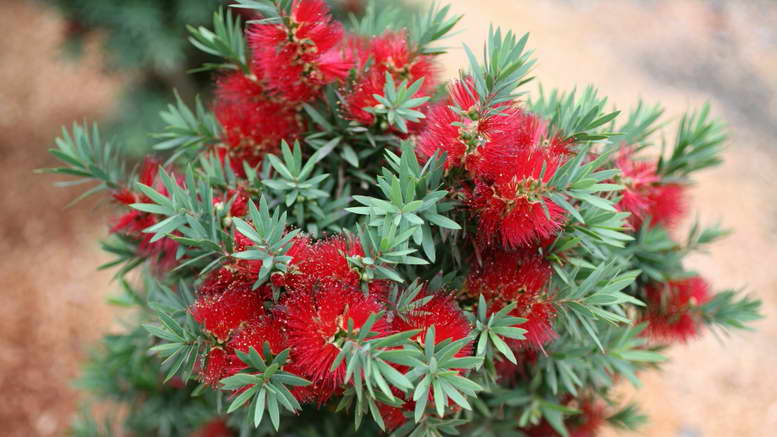
Lemon callistemon has spectacular inflorescences
Callistemon flower is described as an evergreen plant. It is decorated with original inflorescences, which in appearance are similar to bottle cleaners. It is thanks to the presence of stamens that they acquire an unusual and spectacular appearance. Moreover, the flower itself has small and expressionless petals.
The flowers are up to 12 cm long. They have a cylindrical shape and a dense structure. Inflorescences grow at the tips of the branches. After the plant finishes blooming, small spherical fruits appear on its shoots. An interesting fact is that in natural conditions, the flowers are pollinated by birds that eat the nectar of the plant.
The shrub is characterized by narrow, tough leaves. They have such hard edges that they can even damage human skin. The foliage contains essential oils. Leaflets surround the trunk in a spiral.
There are many varieties of culture. The most famous species is the woven callistemon. It is characterized by large, bright red flowers that resemble brushes in appearance. In addition, other types are very popular among flower growers - callistemon rod-shaped, lemon, red.
Callistemon lemon
Callistemon Lemon Callistemon Citrinus is often called citrus. The plant is native to South Australia. Its minimum height is 1 m. At the same time, the shrub is capable of reaching 3 m or even more. The length of the leaves of the culture is up to 7 cm in length. At the same time, spikelet flowers grow up to 10 cm. Inflorescences are distinguished by a beautiful raspberry shade.
Lemon Callistemon blooms in June. This species is characterized by a large number of varieties:
- Shining - has red inflorescences and a compact crown. The culture does not exceed 2 m in height.
- Anzac is white - it is characterized by white flowers in the form of spikelets. This is a low culture. In favorable conditions, it grows to a maximum of 1.5 m.
- Burgundy - This culture is characterized by bright red flowers.
- Little John is a short plant that does not exceed 1 m.
- Lilac fog - this variety is characterized by purple inflorescences. The bush is of medium size.
Callistemon rod-shaped
The main difference between this variety of callistemon is considered to be the drooping shape of the stems. The most common variety of the species is Captain Cook. It reaches a height of 1.5 m.In nature, its standard height is 7 m.
Callistemon red
This bright red callistemon is native to South Australia. This is a very large crop, which reaches 4 m in height.Leaves grow up to 7 cm, and inflorescences up to 9 cm. Red stamens are characteristic of this culture. Anthers have a yellow tint. This makes the plant appear golden.
Callistemon - home care
In order for a crop to be successful, it must be properly cared for. The bush can be kept indoors or planted in open ground. In any case, the flower must be provided with suitable conditions.
Lighting
Callistemon is a light-loving culture that thrives in bright sunlight. In hot summer weather with an active sun, the flower needs shading.
The culture pot should be placed on sills with a southern orientation. In the north, the flower will lack the sun. Subsequently, this will negatively affect its appearance.
In the summer, the flower should be moved to an open balcony or taken out into the street. At the same time, you need to gradually adapt the plant to the active sun. This will help prevent burns on the foliage.
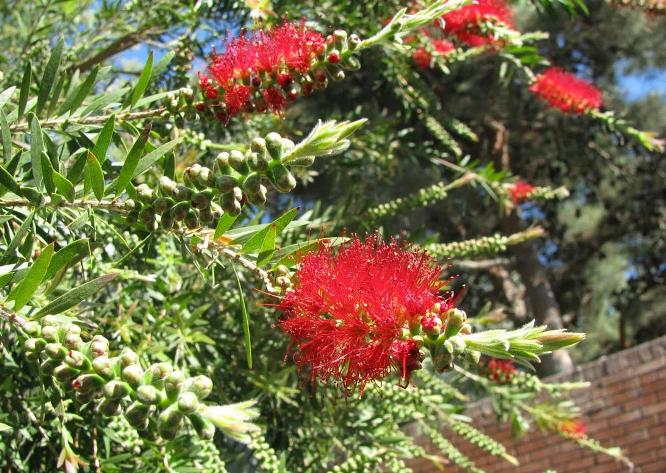
Culture should be placed on a lighted windowsill
Watering
During the active growing season, the flower needs abundant watering. It is important to ensure that the top layer dries out between the moistening of the soil. In autumn and winter, the number of waterings should be significantly reduced. It is recommended to moisten the soil several times a month.
Top dressing
Caring for callistemon at home means proper fertilization. It is worth using combined preparations intended for flowering crops. You need to feed the bushes in moderation. Excess fertilizer negatively affects the flower.
Pruning
Comprehensive callistemon care includes timely pruning. It should be done in early spring or immediately after flowering. At the same time, instead of flowers, not very attractive capsules filled with seeds are formed on the branches.
Pruning helps to stop the development of the crop and form the crown. With this procedure, it is possible to activate bushiness and achieve abundant flowering. Cut off shoots can be used for cuttings.
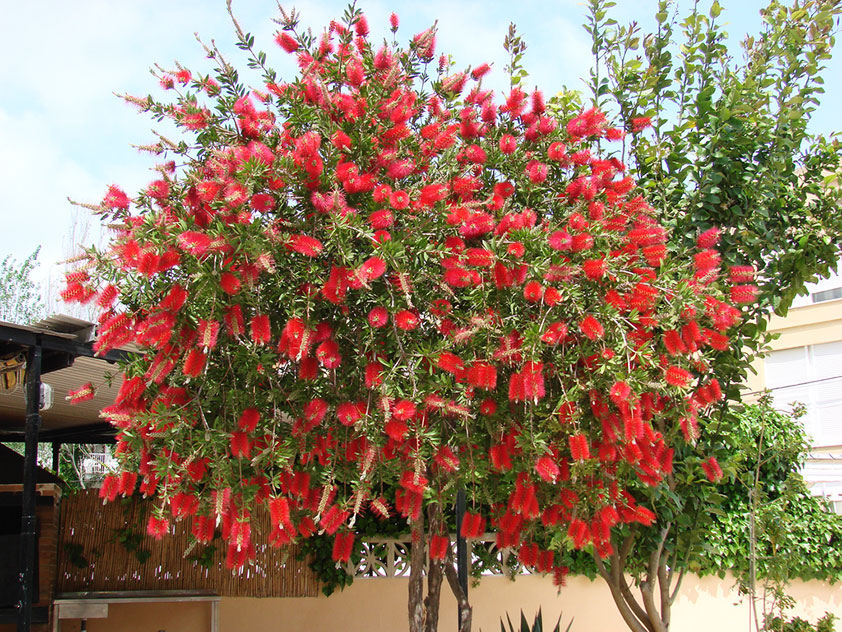
With the help of pruning, the bush is given a beautiful shape.
Temperature
With the arrival of spring, the culture needs to provide a temperature of + 20 ... +22 degrees. With the onset of autumn cold weather, the plant must be brought indoors. This will help avoid hypothermia and frost, which negatively affect the appearance of the culture and its subsequent growth.
In autumn and winter, the indicators should not be higher than + 12 ... +16 degrees. With increased parameters during the dormant period, the culture will not be able to lay buds, and as a result, it will not bloom in spring.
Plant transplant
The flower needs a slightly acidic soil that has good drainage. When making your own soil, you need to mix turf, sand and peat in a ratio of 2: 1: 1.
It is best to grow callistemon in a tight container. Therefore, it is recommended to transplant after filling the entire pot with roots. The procedure is performed every 1-2 years. This should be done in the spring. An adult culture can not be transplanted - it is enough just to change the soil layer in the pot.
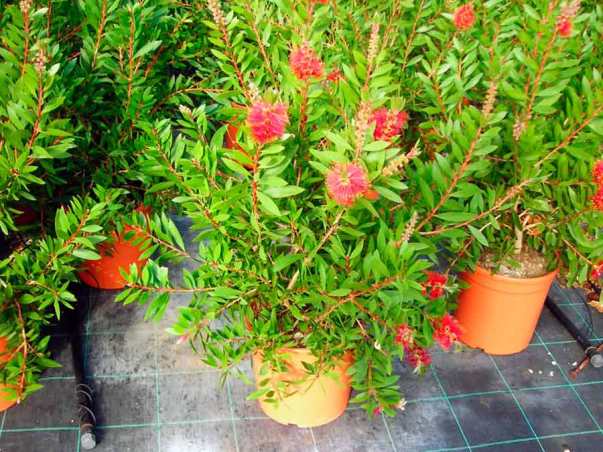
Callistemon is best grown in a cramped pot
Reproduction methods
Callistemon can be propagated by seed or cuttings. Each method has specific features.
Seeds
Growing callistemon from seeds is possible from August to March. Planting is carried out in a moistened mixture of peat and sand. For seed, it is recommended to make a greenhouse, which must be ventilated all the time.The seeds should germinate within a month.
When 2 pairs of leaves appear on the sprouts, they can be planted in permanent pots. Callistemon seedlings are slow-growing. They grow by only 3-4 cm per year.
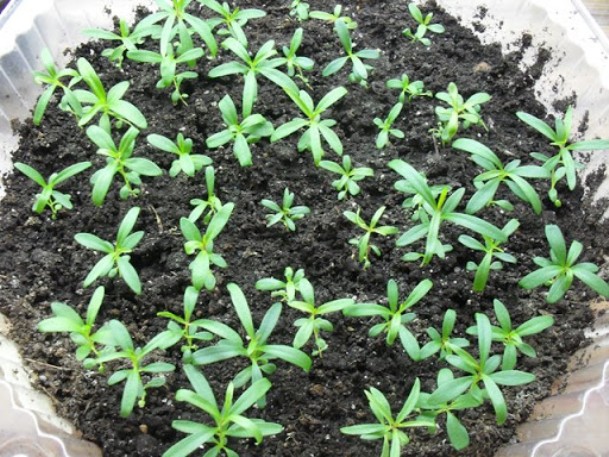
The crop can be propagated by seed.
Cuttings
When propagating callistemon by cuttings, you need to cut off the top 10 cm long from an adult culture and remove the leaves. You should place the branch in water or moistened vermiculite, and then make a greenhouse. The cutting takes 2 months to root. To speed up this process, the shoot is pretreated with a growth stimulant.
Lemon callistemon is a beautiful plant that is very popular with flower growers. To succeed in growing it, you need to provide the culture with proper care.
